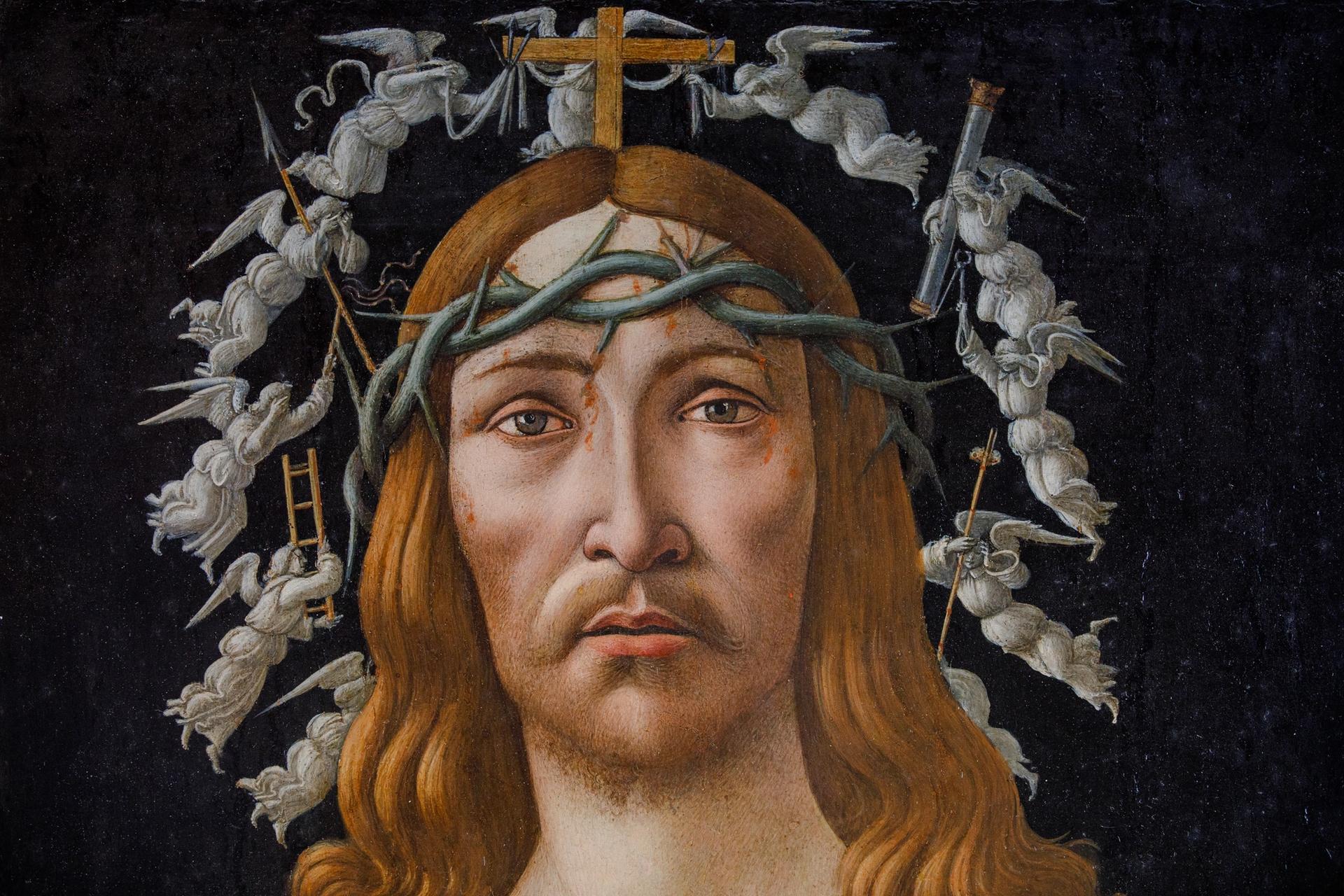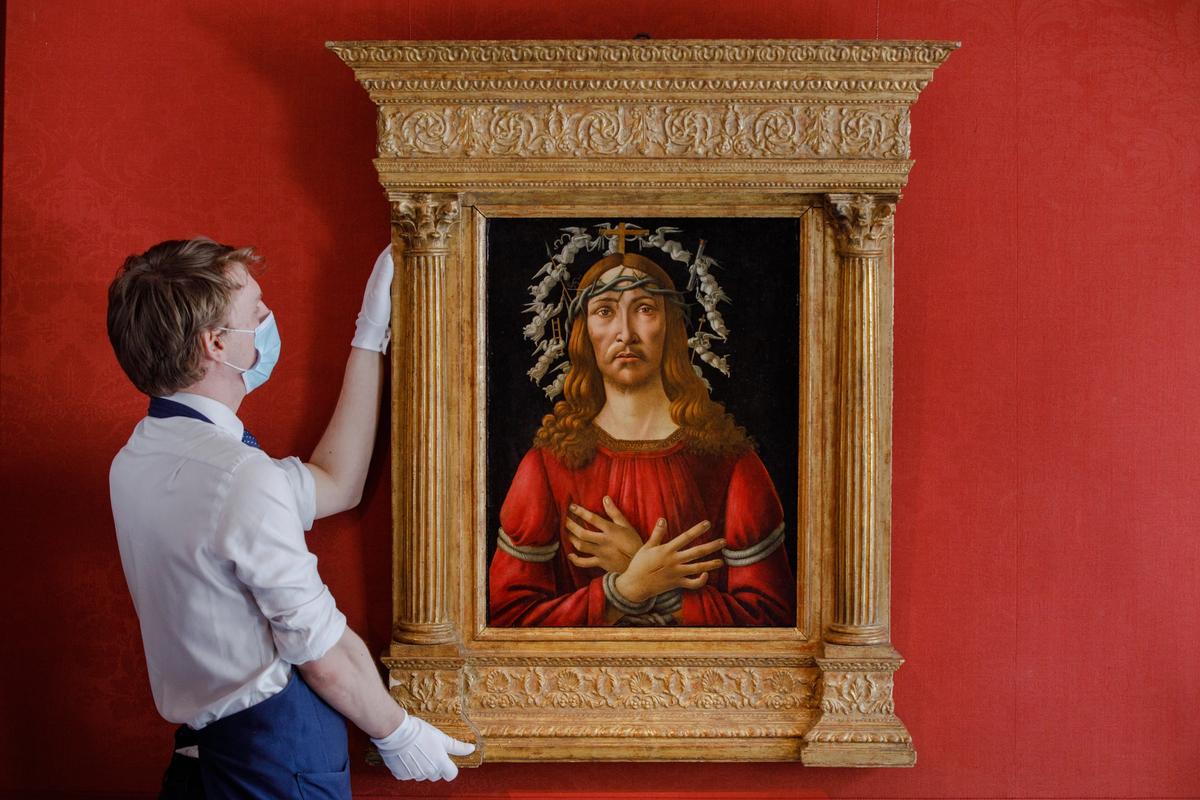Rare "autograph" quality paintings by Sandro Botticelli have become the art trade's equivalent of London buses. You wait and wait and wait, then four of them arrive one after the other.
First, in July 2019, there were was the speculative Portrait of a Young Man, catalogued as "In the style of Botticelli", that sold for a 1,000 times-estimate CHF7.5m (with fees, around £6.1m) at an auction in Zurich, followed, in October, by Botticelli's fully-accepted portrait of the Humanist Michele Marullo Tarcaniota, offered at Frieze Masters for $30m. Then, this January, Sotheby's sold Botticelli's Young Man Holding a Roundel for $92.2m.
And now Sotheby's has announced that it will be selling The Man of Sorrows, a half-length panel painting of the resurrected Christ, thought to date from around 1500, which its marketing ambitiously claims is "the defining masterpiece of Botticelli's late career."
Scheduled to be auctioned in New York in January 2022, the Botticelli will be unveiled in Hong Kong, then makes a global tour with viewings in Los Angeles, London, Dubai and New York. The painting is certain to sell, courtesy of a pre-auction financial guarantee, and is estimated to raise more than $40m.
The Man of Sorrows, like Young Man Holding a Roundel, is an attributional upgrade. The painting, owned by an American collector, last appeared at auction 1963, when it sold for the relatively modest price of £10,000. It was listed among the "workshop and school pictures" in Ronald Lightbown's seminal 1978 catalogue of Botticelli's works.
But now, following its inclusion in the 2009-2010 exhibition, Botticelli: Likeness, Myth, Devotion, at the Städel Museum, Frankfurt am Main, and a subsequent in-person viewing, The Man of Sorrows has been hailed by Laurence Kanter, the chief curator of European art at Yale University Art Gallery, as an autograph-quality masterpiece of the artist's late period. Kanter was an enthusiastic admirer of Sotheby's Young Man Holding a Roundel. The upgraded attribution for The Man of Sorrows has also been endorsed by Keith Christiansen, the chairman of the department of European paintings at the Metropolitan Museum of Art in New York, according to Sotheby's. However, Scott Nethersole, a specialist Botticelli scholar who is Reader in Italian Renaissance Art at the Courtauld Institute in London, remains less convinced of the painting's fully autograph status.

Detail of The Man of Sorrows
Courtesy of Sotheby's
Botticelli's late religious paintings from the 1490s onwards are imbued with an other-worldliness that reflects the fervid "bonfire of vanities" preaching of the Dominican friar Girolamo Savonarola, who briefly became the de facto ruler of Florence, before being publicly executed in 1498. Vasari, in his Lives of the Artists, wrote that Botticelli became an adherent of Savonarola's sect, which led him to "abandon painting". We now know that not to be the case. The Man of Sorrows, impassively displaying his wounds as a halo of weeping angels holding Instruments of the Passion flutters around his head, has many stylistic similarities with Botticelli's Mystic Nativity in the National Gallery, signed and dated 1500.
"This is a crossover picture. It could appeal to a contemporary collector," says Christopher Apostle, Sotheby's head of Old Master paintings in New York. "I see a strong, stark, in-your-face image, which seem to be where we get people coming into the market, especially a big name like Botticelli, that they all know and all love."
The allure of the Botticelli brand isn't in question. But how can we be sure this picture with a $40m-plus price tag is a fully "autograph" work by a Florentine Renaissance artist who ran a busy workshop that made quantities of religious paintings?
According to Sotheby's, Lightbown's 1978 catalogue of Botticelli's works, written long before tens of millions of dollars could hang on a single attribution, took a "restrictive" view of the artist's output. The auction house points out that the 2009-2010 Städel Museum Botticelli show exhibited The Man of Sorrows as an autograph-quality discovery. Sotheby's cataloguing does not mention the ground-breaking exhibition, Botticelli: Artist and Designer, currently running at the Musée Jacquemart-André in Paris. This explores how the artist's workshop was a "laboratory of ideas," making paintings that were pretty much all, to varying degrees, even in the case of one-off masterworks such as La Primavera, collaborations between the master and his assistants.
Botticelli's celebrated portrait, La Bella Simonetta, from Frankfurt's Städel Museum, is one of the star exhibits of this Paris show. Catalogued by Lightbown as a workshop piece, this is nowadays proudly displayed by the German museum as an autograph-quality highlight of its collection.
"It ticks all the boxes of an iconic work," says Ana Debenedetti, the curator of Botticelli: Artist and Designer, commenting on La Bella Simonetta in The Art Newspaper's review of her exhibition in Paris. As Debenedetti puts it, detailed examination of that Frankfurt portrait definitively shows "Botticelli is there". But her exhibition also demonstrates that there are many other paintings designed by Botticelli in which the master's hand is further away. "The application of the pictorial layer is another matter," adds Debenedetti.


